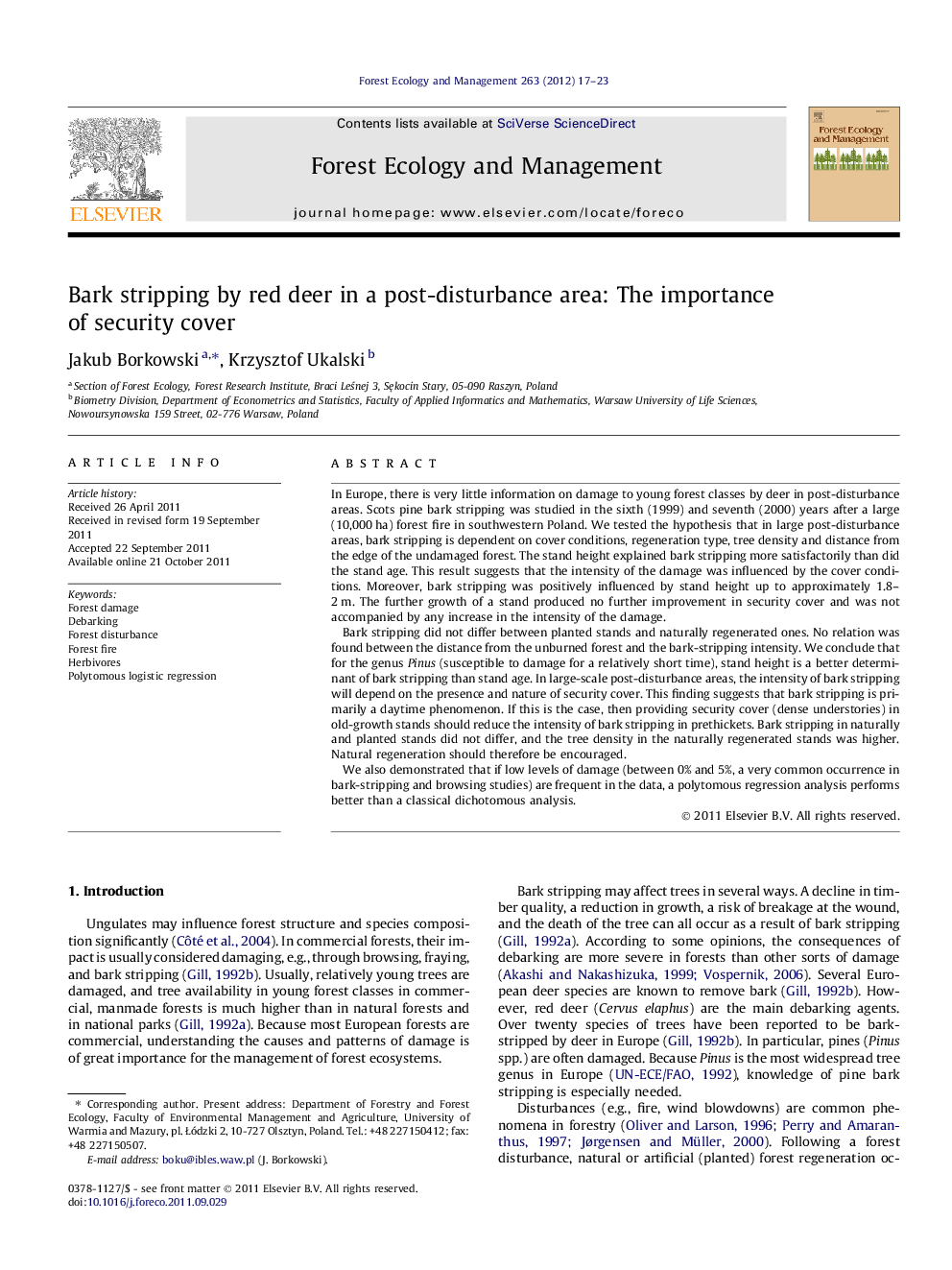| کد مقاله | کد نشریه | سال انتشار | مقاله انگلیسی | نسخه تمام متن |
|---|---|---|---|---|
| 87747 | 159265 | 2012 | 7 صفحه PDF | دانلود رایگان |

In Europe, there is very little information on damage to young forest classes by deer in post-disturbance areas. Scots pine bark stripping was studied in the sixth (1999) and seventh (2000) years after a large (10,000 ha) forest fire in southwestern Poland. We tested the hypothesis that in large post-disturbance areas, bark stripping is dependent on cover conditions, regeneration type, tree density and distance from the edge of the undamaged forest. The stand height explained bark stripping more satisfactorily than did the stand age. This result suggests that the intensity of the damage was influenced by the cover conditions. Moreover, bark stripping was positively influenced by stand height up to approximately 1.8–2 m. The further growth of a stand produced no further improvement in security cover and was not accompanied by any increase in the intensity of the damage.Bark stripping did not differ between planted stands and naturally regenerated ones. No relation was found between the distance from the unburned forest and the bark-stripping intensity. We conclude that for the genus Pinus (susceptible to damage for a relatively short time), stand height is a better determinant of bark stripping than stand age. In large-scale post-disturbance areas, the intensity of bark stripping will depend on the presence and nature of security cover. This finding suggests that bark stripping is primarily a daytime phenomenon. If this is the case, then providing security cover (dense understories) in old-growth stands should reduce the intensity of bark stripping in prethickets. Bark stripping in naturally and planted stands did not differ, and the tree density in the naturally regenerated stands was higher. Natural regeneration should therefore be encouraged.We also demonstrated that if low levels of damage (between 0% and 5%, a very common occurrence in bark-stripping and browsing studies) are frequent in the data, a polytomous regression analysis performs better than a classical dichotomous analysis.
► We studied bark-stripping by red deer in a large post-disturbance area.
► With a remarkable share of low levels of damage polytomous regression performs better than dichotomous one.
► Security cover (prethicket height) was important determinant of bark stripping intensity.
► Providing security cover in old-growth stands should reduce damage intensity in prethickets.
Journal: Forest Ecology and Management - Volume 263, 1 January 2012, Pages 17–23